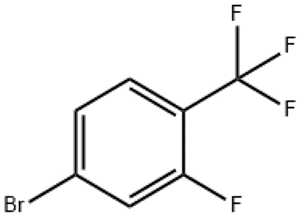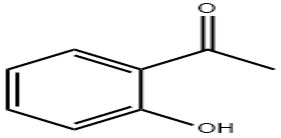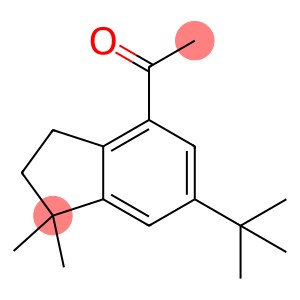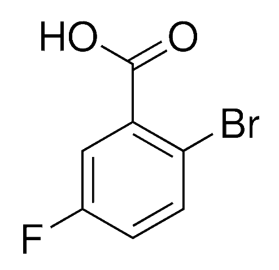4-Bromo-2-fluorobenzotrifluoride (CAS# 142808-15-9)
Risk and Safety
| Risk Codes | R36/37/38 – Irritating to eyes, respiratory system and skin. R20/21/22 – Harmful by inhalation, in contact with skin and if swallowed. R51/53 – Toxic to aquatic organisms, may cause long-term adverse effects in the aquatic environment. R36 – Irritating to the eyes |
| Safety Description | S26 – In case of contact with eyes, rinse immediately with plenty of water and seek medical advice. S36 – Wear suitable protective clothing. S61 – Avoid release to the environment. Refer to special instructions / safety data sheets. |
| UN IDs | 3077 |
| HS Code | 29039990 |
| Hazard Class | IRRITANT |
4-Bromo-2-fluorobenzotrifluoride (CAS# 142808-15-9) introduction
4-bromo-2-fluoro-trifluorotoluene is an organic compound. The following is an introduction to the properties, uses, preparation methods, and safety information of the compound:
nature:
-Appearance: Colorless to light yellow liquid
-Solubility: soluble in organic solvents such as benzene, ethanol, and chloroform, insoluble in water
Purpose:
4-Bromo-2-fluoro-trifluorotoluene has certain applications in the field of organic synthesis:
-As a reaction medium, participate in organic reactions, provide reaction conditions and accelerate reaction rates.
-In the research field, it can be used for the synthesis, analysis, and characterization of novel organic compounds.
Manufacturing method:
4-bromo-2-fluoro-trifluorotoluene can be prepared by the following method:
-4-Bromo-2-fluoro-trifluorotoluene is obtained by reacting p-chlorotoluene with aluminum trifluoride and then reacting with chlorine bromide.
Security information:
-4-bromo-2-fluoro-trifluorotoluene is an organic compound, and corresponding safety measures should be taken when using and handling it.
-May cause irritation to the skin and eyes, prolonged exposure and inhalation should be avoided.
-When used in laboratory and industrial environments, appropriate protective equipment such as laboratory gloves, goggles, and protective clothing should be worn.
-It should be stored properly, avoiding contact with incompatible substances such as oxidants, and kept away from sources of fire or high temperatures.
-During the handling and disposal process, relevant regulations and safety operating procedures should be followed.








